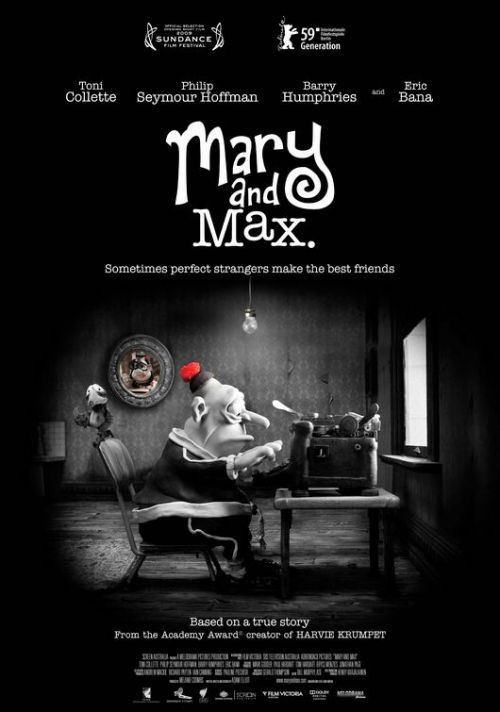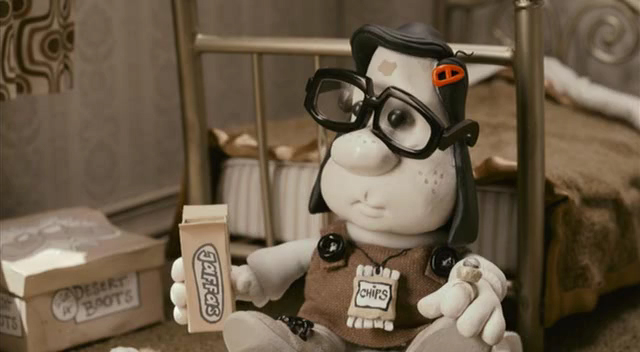Technology is constantly fluctuating. Even other day you can get a new phone that’ll do at least one more thing than the last one: voice dialing, HD video recording, bar-code reading, GPS, video chat, until eventually our phones will inhabit our bodies and force us into slavery. Wait, has Apple already done that?
Another bit of technology that is constantly in flux is film. One day we have jerky, black-and-white, soundless frames available in 5″x5″ manually rotating film boxes, the next we have computer generated imagery of a cartoon wildebeest sharing a screen with the since deceased Rodney Dangerfield running us down in 3-D. It’s been quite a century.
In the midst of that timeline of film, there once was an stop-motion animated process called claymation. The use of claymation began before cell-structuring, and could be seen used in creations such as Bob the Builder, every worthwhile Christmas special ever made, TOOL videos, and uber-ridiculous video games. In keeping with the idea that art should be a pain-staking, bloody process that would take years to accomplish, claymation film made itself a true 3-D art form to be pitted against a more commercial, computer-generated 3-D world. Sadly, stop-motion in general lost steam as Tim Burton decided to put Johnny Depp and Helena Bonham Carter in as many live-action movies as possible. however, there was a minor resurgence in the art-form when Seth Green launched his infamous Robot Chicken. It is unknown how much an effect Robot Chicken had on writer/director Henry Selick, but some time later Coraline hit the public with tremendous success. Stop-motion animation was shot in 3-D, blending the old with the new with fantastic success.
However, I haven’t given a crap about the return of claymation for at least a decade, until I saw Mary & Max.
The story that evolves in Mary & Max is almost like an adult fairytale, except that it is based in reality, and is supposedly even based on a true story. It’s not exactly the content that makes it like a fairytale, but more how it is presented. For most of the film, the story is explained to us by a disembodied narrator (voiced by Barry Humphries) as if our grandfather were telling us about Mary & Max, after he had told us that babies came from beer glasses. This narration gives the story a quirky cuteness to it, since many times the action on the screen is almost the opposite of what the narrator is portraying, like how a child, or a middle-aged man with Asperger’s Syndrome, would imagine it.
The plot of Mary & Max is as follows: a lonely, chubby 8 year old Australian with a Gorbachev birthmark named Mary Daisy Dinkle randomly chooses an address from New York to start writing to in the hopes that they would answer a question about where babies come from in America. The letter is received by Max Jerry Horowitz (played by Philip Seymour Hoffman), an obese, 44 year old Jewish atheist living in New York with Asperger’s Syndrome. Mary’s simple letter is answered with a novel of a letter where Max divulges information I wouldn’t put in a diary that I locked away in a safety deposit box on the moon. He also tells her that in America, babies come from eggs laid by rabbis, Catholic nuns, and dirty prostitutes. This begins an inter-continental friendship that lasts for about 18 years, that is followed throughout the movie.
The comedy comes from the sincerity of Mary and Max as they try to explain their lives to each other in their socially inept voices: Mary being inexperienced with life, and Max being utterly oblivious at times. A little girl’s obsession with Earl Grey, a man’s obsession with chocolate hotdogs, a closeted Greek boy with an obsession with sheep herders (played by Eric Bana), even suicide, these ideas are all incorporated into almost a sing-song quality. This does not diminish the emotions involved to the viewer when watching the film, but it does dull the sharpness a bit. The story isn’t without grieving moments, which makes it more like the adult fairytale description that I just can’t shake from. Oh, and I got a little misty-eyed at the end. Like when I watched What Dreams May Come and Big Fish. Wimp, you say? I dare you to get through any of these 3 movies without some tears, you cold-hearted f**kers.
The production of the film is fantastic. During the opening credits, the camera work makes it a point to show the detail and texture that had gone into creating the settings and characters, from lamp posts to pets. They look almost animated, which is a testament to not only the clay artisans, but the cinematography as well. The detail is what makes this movie stand out most of all, and reclaim the idea of claymation as an art-form, and not some ridiculously low-budget production style.
In regards to flaws, I couldn’t find any. The only thing I could call a flaw is that the packaging as an animated movie, and the “Not Rated” rating, could result in an oblivious parent picking out the movie for their child. There are few moments that could be construed as explicit, but as a whole, the movie is a little too deep and the subject matter a bit more adult orientated. This is from a guy who turned his younger siblings on to horror movies.
I give this film 5 out of 5 chocolate hotdogs. Get the Blu-Ray version if you have the chance, and the extra 5 bucks.





